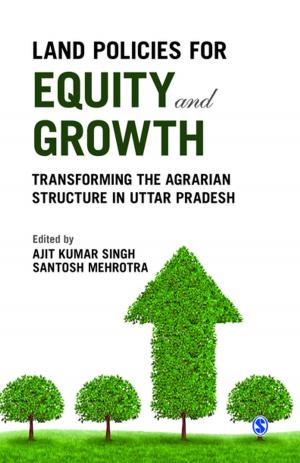Event History and Survival Analysis
Regression for Longitudinal Event Data
Nonfiction, Reference & Language, Reference, Research, Social & Cultural Studies, Social Science| Author: | Paul D. Allison | ISBN: | 9781483316055 |
| Publisher: | SAGE Publications | Publication: | February 19, 2014 |
| Imprint: | SAGE Publications, Inc | Language: | English |
| Author: | Paul D. Allison |
| ISBN: | 9781483316055 |
| Publisher: | SAGE Publications |
| Publication: | February 19, 2014 |
| Imprint: | SAGE Publications, Inc |
| Language: | English |
Social scientists are interested in events and their causes. Although event histories are ideal for studying the causes of events, they typically possess two features—censoring and time-varying explanatory variables—that create major problems for standard statistical procedures. Several innovative approaches have been developed to accommodate these two peculiarities of event history data. This volume surveys these methods, concentrating on the approaches that are most useful to the social sciences. In particular, Paul D. Allison focuses on regression methods in which the occurrence of events is dependent on one or more explanatory variables. He gives attention to the statistical models that form the basis of event history analysis, and also to practical concerns such as data management, cost, and useful computer software.
The Second Edition is part of SAGE’s Quantitative Applications in the Social Sciences (QASS) series, which continues to serve countless students, instructors, and researchers in learning the most cutting-edge quantitative techniques.
Social scientists are interested in events and their causes. Although event histories are ideal for studying the causes of events, they typically possess two features—censoring and time-varying explanatory variables—that create major problems for standard statistical procedures. Several innovative approaches have been developed to accommodate these two peculiarities of event history data. This volume surveys these methods, concentrating on the approaches that are most useful to the social sciences. In particular, Paul D. Allison focuses on regression methods in which the occurrence of events is dependent on one or more explanatory variables. He gives attention to the statistical models that form the basis of event history analysis, and also to practical concerns such as data management, cost, and useful computer software.
The Second Edition is part of SAGE’s Quantitative Applications in the Social Sciences (QASS) series, which continues to serve countless students, instructors, and researchers in learning the most cutting-edge quantitative techniques.















